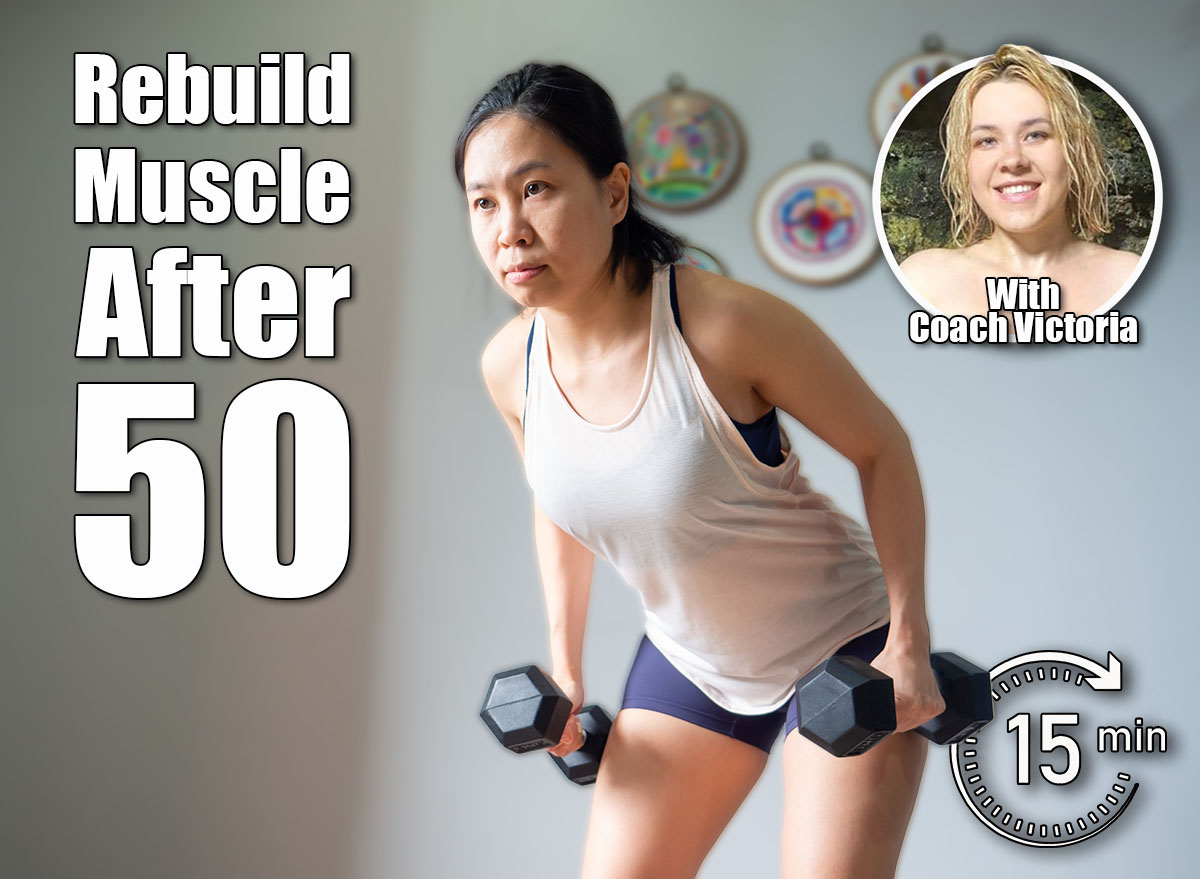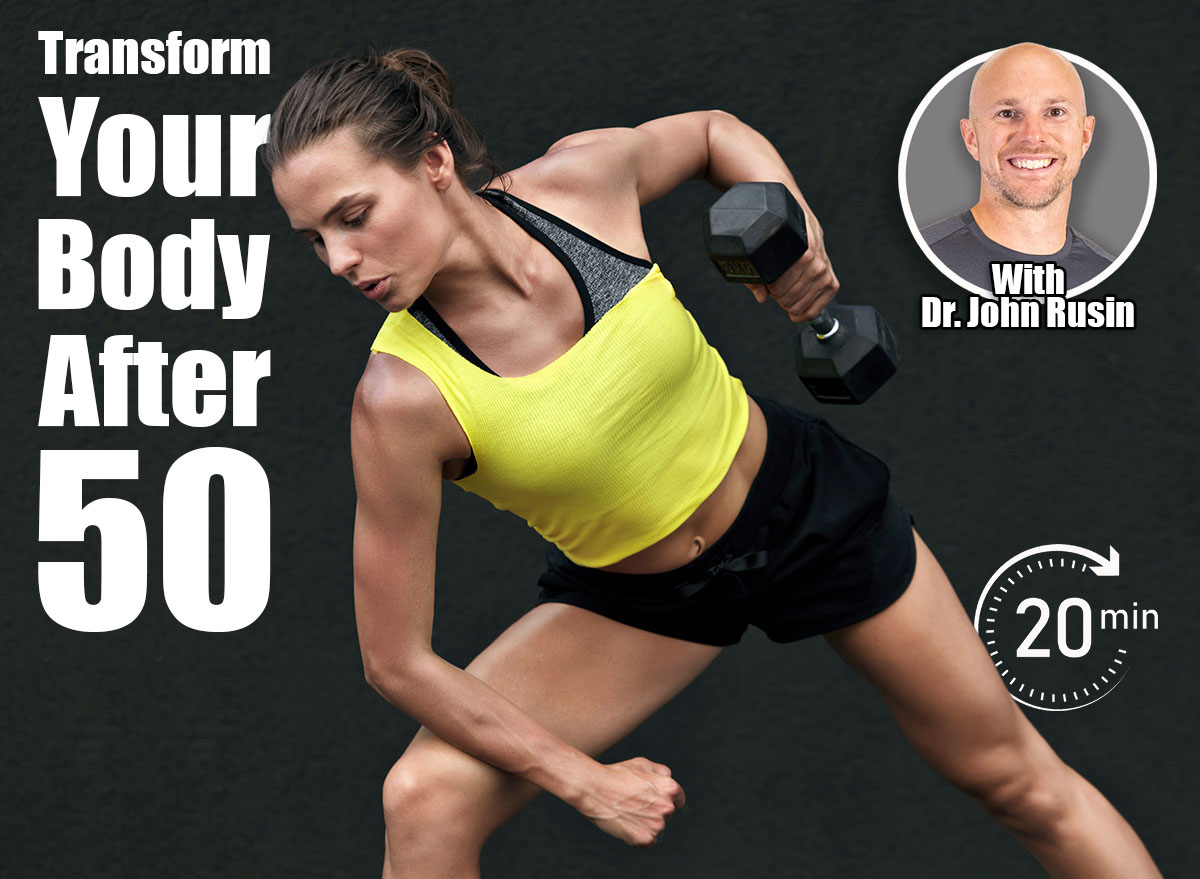Are you ready to feel stronger, more energetic, and confident after 50? Weight exercises can be the key to unlocking a healthier, more vibrant you.
Whether you’re new to strength training or getting back into it, the right exercises can help you build muscle, protect your bones, and boost your overall well-being. You’ll discover simple and effective weight exercises designed specifically for women over 50.
Keep reading, and find out how easy it can be to start transforming your body and your life today.
Table of Contents
ToggleBenefits Of Weight Training After 50
Weight training offers many benefits for women over 50. It helps maintain strength and supports overall health. Regular weight exercises improve how the body works and feels. This type of training can boost energy and confidence. It also helps prevent common health problems that appear with age. Below are some key benefits of weight training after 50.
Boosting Bone Density
Weight training strengthens bones by putting gentle pressure on them. This pressure signals the body to build stronger bone tissue. Stronger bones reduce the risk of fractures and osteoporosis. Women over 50 often face bone loss, so weight training helps protect bone health. It keeps bones dense and less fragile.
Enhancing Muscle Mass
Muscle mass naturally decreases with age. Weight exercises help rebuild and maintain muscle strength. More muscle means better balance and easier daily activities. Strong muscles support joints and reduce the risk of falls. Weight training helps women stay active and independent.
Improving Metabolism
Metabolism slows down as women age. Weight training helps increase muscle, which burns more calories. A higher metabolism helps control weight and reduce fat. This process supports heart health and overall energy levels. Regular weight training keeps metabolism steady and strong.
Supporting Joint Health
Weight exercises improve the strength of muscles around joints. Strong muscles reduce stress on joints and lower pain. This support helps manage arthritis and joint stiffness. Weight training also improves flexibility and movement. It keeps joints healthy and functioning well.
Choosing The Right Exercises
Choosing the right weight exercises is important for women over 50. The right exercises help build strength, improve balance, and protect joints. It is best to focus on movements that work many muscles at once. This approach saves time and improves overall fitness. Exercises should also feel safe and manageable.
Compound Movements To Try
Compound movements involve several joints and muscles. They help improve strength and coordination. Examples include squats, lunges, and push-ups. These exercises engage large muscle groups and boost metabolism. They also mimic everyday activities, making daily tasks easier.
Targeting Major Muscle Groups
Focus on exercises that work the legs, back, chest, and arms. Strong muscles in these areas support good posture and balance. Try deadlifts, chest presses, and rows. Targeting major muscles helps reduce injury risk. It also improves overall body function and mobility.
Incorporating Functional Training
Functional training improves movements used in daily life. It enhances balance, strength, and flexibility. Use exercises like step-ups, kettlebell swings, and farmer’s carries. These help with tasks like climbing stairs or carrying groceries. Functional training builds strength that feels useful every day.
Designing A Balanced Workout Plan
Designing a balanced workout plan is important for women over 50. It helps build strength, improve health, and maintain energy. A good plan includes the right mix of exercises, rest, and time. Balance keeps the body safe and working well.
Frequency And Duration
Exercise sessions should happen about three to four times each week. Each session can last 30 to 45 minutes. This amount allows muscles to grow stronger without causing too much tiredness. Short, regular workouts work better than long, rare ones.
Rest And Recovery Strategies
Rest days are just as important as workout days. Muscles need time to heal and get stronger. Take one or two full rest days every week. Use light activities, like walking or stretching, on rest days to stay active. Listen to your body and avoid pushing too hard.
Combining Strength With Cardio
Mix weight exercises with cardio workouts like walking or swimming. Cardio helps heart health and burns extra calories. Strength training builds muscle and protects bones. Aim for two days of strength and two days of cardio each week. This combo keeps the body balanced and healthy.
Safety Tips For Effective Training
Training with weights is a great way for women over 50 to stay strong and healthy. Safety matters most to avoid pain and injuries. Simple steps can make workouts safer and more effective. This section shares key safety tips for weight exercises.
Proper Form And Technique
Good form keeps your body safe during exercises. It helps muscles work well and stops wrong movements. Start with light weights to learn correct posture. Watch yourself in a mirror or ask for help. Move slowly and control each motion. Proper technique lowers the chance of injury.
Avoiding Common Injuries
Injuries often come from overdoing or poor habits. Warm up before lifting weights to prepare muscles. Use weights that match your strength. Don’t rush or lift too heavy. Take breaks between sets to rest. Stretch after workouts to keep muscles flexible. These steps protect joints and muscles.
Listening To Your Body
Your body sends signals during exercise. Pay close attention to pain or discomfort. Stop if you feel sharp or sudden pain. Fatigue is a sign to slow down or rest. Rest days help muscles heal and grow stronger. Being patient and kind to your body improves results.
Equipment Options For Home And Gym
Choosing the right equipment is key for weight exercises after 50. It affects how safe and effective your workouts will be. Both home and gym options offer many choices. Each type helps build strength in different ways. Understanding the benefits of each can guide your decisions.
Free Weights Vs. Machines
Free weights include dumbbells, kettlebells, and barbells. They require balance and control, engaging more muscles. This can improve coordination and joint stability. Machines guide your movement and reduce injury risk. They are easier to use for beginners or those with joint pain. Both can build muscle well. Choose based on your comfort and fitness level.
Using Resistance Bands
Resistance bands are light and portable. They create tension to strengthen muscles. Bands come in different resistance levels. They work well for gentle strength training and stretching. Bands also improve flexibility and range of motion. You can use them at home or take them to the gym. They are budget-friendly and easy to store.
Bodyweight Exercises
Bodyweight exercises use your own weight for resistance. Squats, push-ups, and lunges are examples. These exercises improve strength, balance, and endurance. No equipment is needed, making them perfect for home workouts. They can be modified to suit all fitness levels. Consistent practice builds muscle and supports healthy aging.

Credit: www.eatthis.com
Nutrition To Support Strength Gains
Nutrition plays a key role in building strength for women over 50. Proper food choices help repair muscles and boost energy. Eating the right nutrients supports workout results and overall health.
Focus on balanced meals with protein, fluids, and vitamins. These help maintain muscle mass and improve recovery after exercise.
Protein Intake Guidelines
Protein is essential for muscle repair and growth. Aim for 1 to 1.2 grams of protein per kilogram of body weight daily. Include sources like lean meat, fish, eggs, beans, and dairy. Spread protein intake evenly across meals. This helps your body absorb it better. Protein supports strength and prevents muscle loss with age.
Hydration Tips
Water keeps muscles working well and reduces fatigue. Drink at least 8 cups of water daily. Increase intake on workout days or in hot weather. Avoid sugary drinks that can cause dehydration. Sipping water throughout the day is better than large amounts at once. Proper hydration aids muscle recovery and overall health.
Supplements To Consider
Some supplements can help support strength gains. Vitamin D helps muscle function and bone health. Omega-3 fatty acids reduce inflammation and support recovery. Creatine may improve muscle strength in older adults. Always talk to a healthcare provider before starting supplements. They ensure safety and proper dosage for your needs.
Tracking Progress And Staying Motivated
Tracking progress is key for women over 50 doing weight exercises. It helps to see improvements and keeps motivation high. Without tracking, it is easy to lose focus or feel stuck. A clear record shows how far you have come. It also points out areas to improve. Staying motivated is easier when progress is visible and goals are clear.
Setting Realistic Goals
Start with small and clear goals. This makes progress feel possible and real. Avoid setting goals that are too hard or fast. Goals like lifting a bit more weight or adding a few more reps work well. Celebrate each success. Realistic goals keep motivation steady and reduce frustration.
Using Fitness Apps And Journals
Fitness apps help track workouts and progress easily. They can show patterns and improvements over time. Journals work well too. Writing down exercises, weights, and feelings helps remember details. Both tools make tracking simple. They keep you accountable and focused on your routine.
Building A Support Network
Support from friends or groups makes exercise more fun. Sharing progress with others encourages you to keep going. Find people with similar goals or age. They understand challenges and celebrate wins. A support network offers advice and motivation. It helps you stay consistent and enjoy the journey.

Credit: www.eatthis.com

Credit: www.everydayhealth.com
Frequently Asked Questions
What Are The Best Weight Exercises For Women Over 50?
Strength training with dumbbells, resistance bands, and bodyweight exercises is ideal. Focus on compound movements like squats, lunges, and rows. These build muscle, improve bone density, and boost metabolism safely for women over 50.
How Often Should Women Over 50 Do Weight Exercises?
Aim for 2 to 3 weight training sessions per week. Allow at least one rest day between workouts. Consistency helps build strength and supports joint health without overtraining.
Can Weight Training Help Prevent Osteoporosis In Older Women?
Yes, weight training stimulates bone growth and increases density. This reduces osteoporosis risk and strengthens bones. Combining weight exercises with calcium and vitamin D intake offers the best protection.
Is It Safe For Women Over 50 To Lift Heavy Weights?
Yes, with proper form and gradual progression. Start with lighter weights and increase slowly. Consulting a fitness professional ensures safety and reduces injury risk.
Conclusion
Weight exercises help women over 50 stay strong and healthy. They support bones and muscles, reducing injury risks. Regular workouts improve balance and boost energy levels. Start with simple moves and increase slowly. Consistency matters more than intensity. Enjoy the process and listen to your body.
Strength training can make daily tasks easier. Keep moving and feel the positive changes every day.







